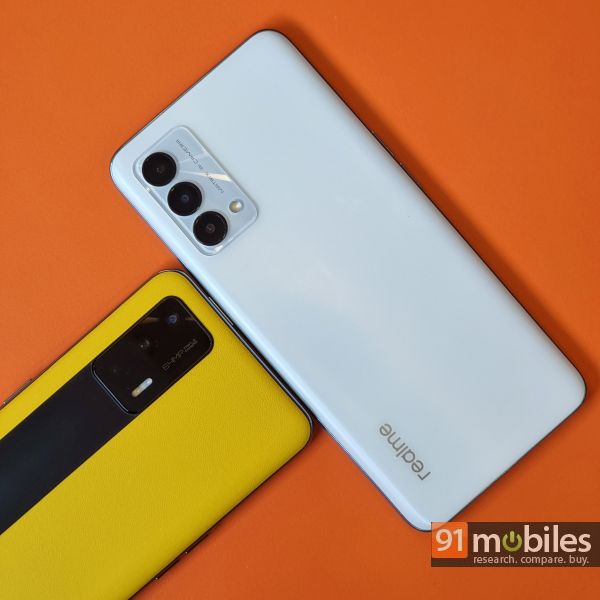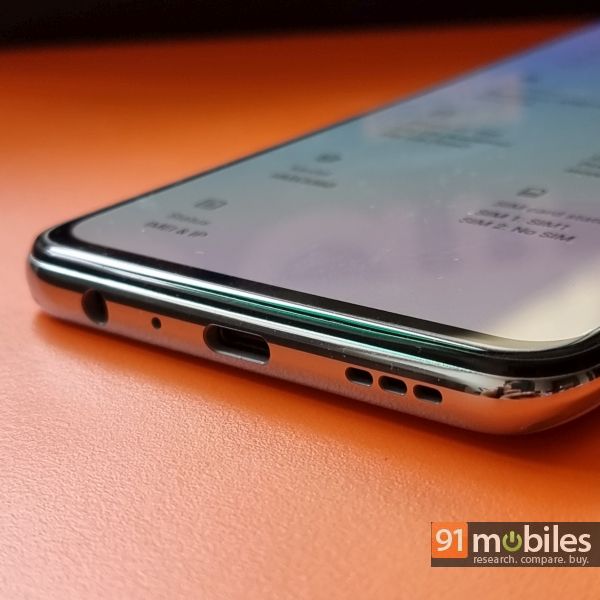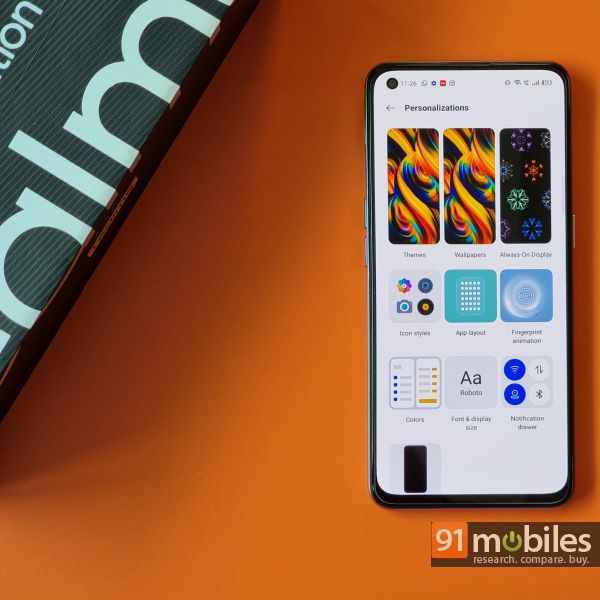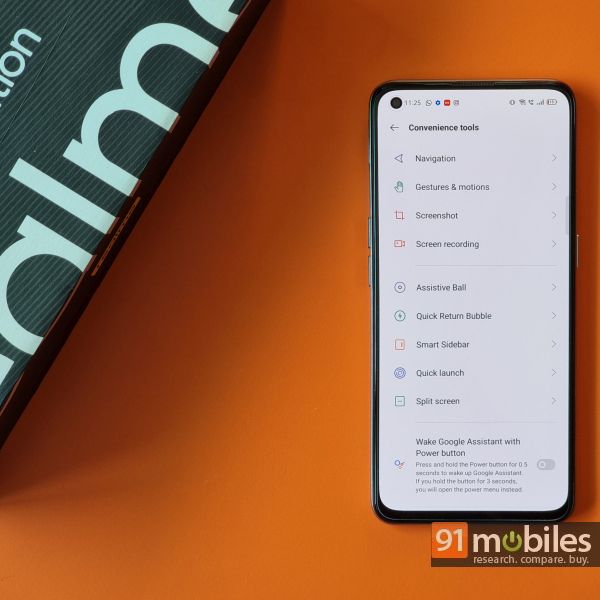Realme GT Master Edition review with pros and cons
Realme has been churning out compelling devices like clockwork, keeping both, prospective buyers, as well as critics on their toes. No sooner than a new product from the company is announced, another device from the brand is tipped for a launch over the interwebs. Case in point – the Realme GT series of smartphones, that have been launched weeks after the company showcased a slew of accessories in the sub-continent.

To get you up to speed (no pun intended), the brand has just launched two new phones dubbed the Realme GT Master Edition, and the Realme GT 5G to bolster its mid-range lineup. While the two handsets draw a few parallels with each other, they are backed by completely different processors, with the Master Edition powered by Qualcomm’s brand-new Snapdragon 778G SoC. Making matters even more interesting, the company hopes to rival similarly-priced Dimensity 1200 flagships with its latest offering. So, in this review, let’s see if the Realme GT Master Edition is worthy of your bucks.
Verdict
The Realme GT Master Edition is a compelling handset, albeit is overshadowed by the company’s own X7 Max 5G (review) which puts forth a more well-rounded package.
Design
Realme is going all out with the design of the Realme GT Master Edition. On that note, the company has roped in industrial designer Naoto Fukasawa to create a custom trim for the GT Master Edition. Now, to be clear, while the GT Master Edition is available in three different hues, Naoto Fukasawa has only designed the Voyager Grey model that touts a vegan leather finish.
I did use that particular model for a bit and I’ll admit – it is rather unique, especially when pit against the herd of plastic and glass-back phones in the market.

However, that’s not to say that the Lunar White variant sent to me for review looks inferior or bad. In fact, the back of the phone features a soft matte finish that doesn’t just keep smudges at bay, but also imparts a velvety in-hand feel. Now, while the phone makes use of plastic in its construction, I am all for it. For one, the device feels every bit as premium as say, the glass-backed Nord 2. Moreover, the use of plastic drastically reduces the handset’s weight and the GT Master Edition tips the scales at just 174 grams (the Voyager Grey edition weighs 180g, BTW). Coupled with its 8mm of thickness, the GT Master Edition is easily amongst the most comfortable phones I’ve used this year. Rest assured, if you are habitual to one-handed texting, or just need an ergonomic phone that doesn’t ache your wrists after extended use, the Realme GT Master Edition is a solid buy.

As for the ports and the buttons, the Realme GT ME has a Type-C port at the bottom, which is sandwiched between a 3.5mm headphone jack and a speaker grille. The device also comes with a dual-SIM tray, and sports a clicky volume rocker and power button on its left and right spine respectively. There’s an in-display fingerprint sensor too, which works really well. However, you can also use the smartphone’s speedy face unlock feature to get into your home screens as well.
Display and Audio
The Realme GT Master Edition and the Realme GT ship with the same display as seen on the company’s Realme X7 Max 5G. To that note, the GT Master edition features a 6.43-inch AMOLED panel with FHD+ resolution and 120Hz refresh rate. I have no doubt in my mind that you’ll like the display on the GT Master Edition – the high refresh rate translates into buttery-smooth animations and the display gets satisfactorily bright at 1,000 nits too. What’s more, the smartphone ships with WideVine L1 certification as well and can stream shows in HD from Netflix. That being said, the handset cannot stream content in HDR from Netflix, which is a bummer. Now, I for one can live without HDR streaming, but if you can’t, then you should definitely keep an eye out for the other GT – no, not the Realme GT, but the POCO F3 GT (review) which, in my opinion, has the best display under Rs 30K.

Media consumption aside, the display is really good for gaming too. The handset’s 6.43-inch screen is accommodating enough for a four-finger claw grip, and the flat-styled display paves way for effortless finger gymnastics. What’s more, much like the panel on the Realme X7 Max 5G, the display on the GT Master Edition boasts a rapid touch-response rate of 360Hz. Rest assured, the display will pick up on your swift on-screen taps seamlessly.

Unfortunately, that’s more than I can say for the handset’s audio setup and the smartphone’s downward-firing mono speaker doesn’t sound all that good. What’s more, you can muffle it easily whilst watching movies or playing games on the phone. The company does right some wrongs by including a 3.5mm headphone jack on the phone, but seeing how dual-speaker phones have become the norm in the GT Master Edition’s price segment, I expected the company to do better here. In fact, the company’s very-own X7 Max 5G ships with both, a dual-speaker setup as well as a headphone jack, making it a more sound offering (pun intended) for audio enthusiasts.
Cameras
The Realme GT Master Edition’s Achilles’ heel is undoubtedly its camera setup. While the handset can click serviceable photos, you’ll find no shortage of better-equipped camera phones in the GT ME’s price segment. In terms of specs, the device features a 64MP OmniVision OV64B sensor that works alongside an 8MP wide-angle sensor and a 2MP macro sensor. For selfies, the device gets a 32MP Sony IMX 615 sensor upfront.

Okay, I won’t beat around the bush at all – the Realme GT Master Edition clicks overly contrasty photos. In fact, the handset’s colour science is quite similar to the POCO F3 GT I reviewed a while ago. For the uninitiated, POCO’s offering shipped with an OmniVision sensor as well and the handset was guilty of darkening the shadows to create a more dramatic image as well. As an example, here’s a comparison image I took with the Realme X7 Max 5G and the Realme GT Master Edition. As you can clearly tell, the X7 Max 5G’s image is brighter and more lively, whereas the GT ME’s image corresponds to an overcast scene. Now, do note that the colours aren’t accurate on either of the two shots, but the Realme X7 Max 5G’s photo has much better detail retention, which can be seen if you pan towards the edges of the green generator.


To summarise, the Realme GT Master Edition’s 64MP sensor sways in favour of dramatic images. The smartphone plays up the contrast a tad too much and therefore, the resulting images appear unnaturally darkened. That being said, I was quite happy with the closeups I snagged with the main camera. As you can see in the gallery attached below, the handset doesn’t blotch the colour red and the flowers have ample detailing around the petals.
What’s more, the GT ME ships with a solid front-facing camera that clicks gorgeous selfies. While the images look a tad oversharpened at a closer crop, the colours in the frame as well as the subject’s skin tone are rendered authentically. That being said, I would’ve liked to see a cleaner bokeh cutout for selfies shot with the portrait mode enabled.


As for lowlight, well, the handset does a passable job of clicking photos after the sun has set too. With the night mode enabled, you’ll see more in the scene, however, the colours look a bit doctored. As an example, if you look at the comparison shot attached above, then you’ll notice that the colour of the leaves in the Realme X7 Max’s image is more authentic.
That’s not all, as the company has also bundled a dedicated mode for street photography, aptly dubbed Street mode. Provided you fancy clicking shots of your surroundings or snapping photos in public areas, you’ll find much to like here. For one, the interface neatly labels different magnification levels akin to a zoom lens. What’s more, the setup also offers a snazzy filter, along with focus-peaking mode which gives you a live view of the elements in the frame that are in focus.
Performance and Software
The Realme GT Master Edition is the first phone in the country to ship with a Snapdragon 778G processor. The chipset makes use of Kryo 670 cores which per the brand, offer significantly better processing chops compared to the Kryo 475 cores found in Snapdragon 765G and 768G SoCs. What’s more, unlike Qualcomm’s Snapdragon 765G and 768G SoCs, the 778G is built using a 6nm process and therefore, should be more efficient as well.

As for the RAM and storage, the Realme GT Master Edition ships with 8GB of LPDDR4X memory that has been paired with 256GB of UFS 2.2 storage. Realme has also incorporated dynamic RAM expansion with the phone. For the uninitiated, the feature allows the phone to allocate a part of its internal storage and use it as RAM. In the case of the GT Master Edition, the device gets up to 5GB of added RAM, though for the most part, the handset’s built-in memory should suffice. You’ll also get a GT mode with the phone which, per the brand, maximises the phone’s performance. The feature also comes with a custom animation and from what I can tell, offers similar functionality to most gaming modes available on various Android devices.

With the tech specs out of the way, let’s take a closer look at the Realme GT Master Edition’s performance. Starting with the benchmarks, the Qualcomm Snapdragon 778G processor yielded high numbers in Antutu and GeekBench. In fact, much to my surprise, the results were on par with Qualcomm’s Snapdragon 860 processor, which can be found on the POCO X3 Pro. As can be seen from the snippets attached below, the Snapdragon 778G outputted 5,32,433 points in Antutu, which is eerily close to the X3 Pro’s score of 5,42,292 points. On the flip side, the device managed to beat the X3 Pro in GeekBench, securing higher single-core (781 vs 756 points) and multi-core (2,700 vs 2,493 points) scores respectively.
Interestingly, the handset’s scores were lower when compared to a Dimensity 1200 flagship. For instance, the Realme X7 Max outputted much higher Antutu and GeekBench scores. That said, Qualcomm chipsets tend to bridge the gap with compelling gaming and day-to-day performance, and the Realme GT Master Edition is no exception. Take Call of Duty for instance, which despite SD778G’s lower benchmark scores, runs at the same graphics and frame rate preset (Very High and Very High or High and Max) on both the Realme GT Master Edition as well as the Realme X7 Max 5G.
The same goes for BGMI too, which runs at HDR graphics and Ultra preset on the phone. Now, credit where credit’s due, the X7 Max 5G can run BGMI at 90 fps, whereas the GT Master Edition caps the game at 60 fps only. Regardless, the GT Master Edition’s performance has been to my liking. The device feels rapid and I for one, didn’t notice any stark difference in performance going back and forth between the GT Master Edition and the Realme X7 Max 5G – apps opened quickly, the handset could keep a bunch of apps in memory and my gaming sessions were void of any frame drops.

What’s more, if you factor in thermals and heat dissipation, then the Realme GT Master Edition actually has an edge over devices like the Realme X7 Max 5G. Case in point, the handset’s CPU throttle test, wherein, not only did it throttle less than the X7 Max 5G but also had lower core temperatures. All things considered, while the Dimensity 1200 SoC is a tad more powerful, the Snapdragon 778G is, without a shadow of a doubt, a more stable SoC.

In terms of software, the Realme GT Master Edition ships with the company’s Realme UI v2.0 on top of Android 11. The custom skin needs no introduction and the interface brings a treasure trove of features, including a bunch of customisation options as well as screen-on and off gestures like “raise to wake”, etc. What’s more, the handset also comes with support for an Always On Display, which can be customised extensively from within the settings app. If you’d like to know more about that, then do check out my in-depth customisation guide which talks about some cool ways to tweak a phone running Realme UI v2.0.

Moving on, the interface also features a handful of convenience tools, including a built-in screen recorder, a call recorder, a smart sidebar as well as an app locker. If anything, I would’ve liked to see less bloatware and duplicate apps on the phone. Thankfully, you can declutter your phone’s storage by uninstalling preloaded apps, which is great.
Battery life and Connectivity
The Realme GT Master Edition is backed by a 4,300mAh cell which barely managed to see me through the end of a heavy workday. Rest assured, if you plan on playing a lot of games on your phone, then you’ll see the handset’s battery dip rather quickly. On the bright side, the device comes with support for 65W wired charging, so you should be able to charge the phone in no time. To give you a better picture, I was able to refuel the smartphone’s battery from 0-100 percent in just 27 minutes.

The handset checks all the right boxes in the connectivity department too. For one, the device supports both, 2.4GHz as well as 5GHz Wi-Fi bands and even ships with NFC. Furthermore, the smartphone didn’t give me any connection woes on my Airtel 4G SIM either – the call quality was up to the mark and I was netting adequate download and upload speeds on my cellular network too. As for 5G, the device comes with support for a handful of sub-6GHz bands, including n1, n3, n5, n41, etc, ensuring you’re well-prepped for the upcoming 5G boom.
Final Verdict
The Realme GT Master Edition retails for Rs 25,999 and for the price, gets a few things right. The smartphone ships with a capable processor, offers a sleek design with excellent biometrics and haptics, touts stupendously fast wired charging, and is light on the wallet too. That said, the handset faces stiff competition from a handful of devices, chief among them being Realme’s very own X7 Max 5G (review).

Now, for the Rs 1K extra you’d spend on the X7 Max 5G, you’ll get a slightly faster processor, a dual-speaker setup, faster UFS 3.1 storage, and much better optics. Heck, the smartphone is currently discounted on the company’s portal and retails for the same price as the GT Master Edition! Similarly, you could also pick up the POCO F3 GT which trades in the GT Master Edition’s sleek design for a more premium aluminium chassis. What’s more, the POCO device even ships with dedicated shoulder triggers that might come in handy if you’re a hardcore gamer.

All said and done, the Realme GT Master Edition is a compelling phone and I have thoroughly enjoyed my time with it. However, as is the case with pretty much any other product, there’s always something better on the horizon, if you’re willing to go over your budget.
Editor’s rating: 3.5 / 5
Pros:
- Sleek, lightweight design
- Capable performer
- Stunning display
Cons:
- Audio setup is not the best
- No HDR streaming available on Netflix
- Cameras need to be tuned better
For all the latest Technology News Click Here
For the latest news and updates, follow us on Google News.

